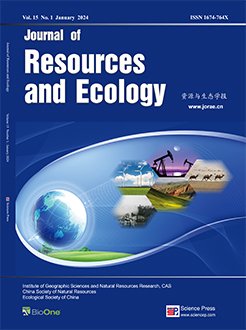The lower reaches of the Jinsha River is the main distribution area of hot-dry valleys in China. While it suffers from frequent droughts, the spatiotemporal variation and driving forces of drought in this area under climate change are still unclear. The spatiotemporal variations of Temperature Vegetation Drought Index (TVDI) and drivers of drought were explored using MODIS land surface temperature and NDVI data from 2000 to 2020. The results are fivefold. (1) TVDI was highly correlated with soil moisture content at a depth of 0–7 cm, indicating that it can accurately reflect the drought situation in the study area. (2) The spatial variability of TVDI was highly heterogeneous, with a multi-year average of 0.59, and the drought level was mainly between normal and dry. (3) From 2000 to 2020, TVDI showed a slightly increasing trend. It increased in 63% of the study area, and significantly increased in 21% of the study area. At the same time, the area at the dry level increased by 14.5% in 2020 from the normal level in 2000. (4) Slightly different from the standard phenomenon of “dry gets drier, wet gets wetter”, we found that both dry and wet areas were becoming drier. (5) TVDI was positively correlated with annual mean temperature in 86% of the region, of which 43% of the region showed a significant correlation. The increasing temperature was the main driving force for the increase in drought in the study area. Our results can provide new insights into the spatiotemporally heterogeneous response of drought to climate change in the lower reaches of the Jinsha River.
How to translate text using browser tools
23 January 2024
Spatiotemporal Variation and Drivers of Drought Based on TVDI in the Lower Reaches of the Jinsha River
Chen Guojian,
Fang Ning,
Li Jianfeng,
Wu Xinghua,
Dong Xianyong
ACCESS THE FULL ARTICLE
climate driven
drought
hot-dry valley
Jinsha River
Spatiotemporal variation
TVDI






